Feast your eyes on the world's most outstanding architectural photographs, videos, visualizations, drawing and models: Introducing the winners of Architizer's inaugural Vision Awards. Sign up to receive future program updates >
Over the past three years, Architizer’s One Drawing Challenge has seen entries of all kinds. From detailed perspectives that explore what the future of the world could be to abstract illustrations that comment on the realities of today, these artworks invite rumination, raising open-ended questions for viewers to ponder. In addition to the powerful stories that they tell, there is also a spectacular exhibition of drawing skills and digital illustration abilities that are sure to mesmerize all.
A few of these creators have used the lens of existing works of art and literature to look at the modern world. Some have used Renaissance paintings to point to the daily problems people grapple with while others have used fantasy stories as a way into conversations about the disconnected world of screens and VR. In this list, we see the different ways in which old ideas can take on new forms.
A(lice) I(n) Www.onderland
By John Clayson
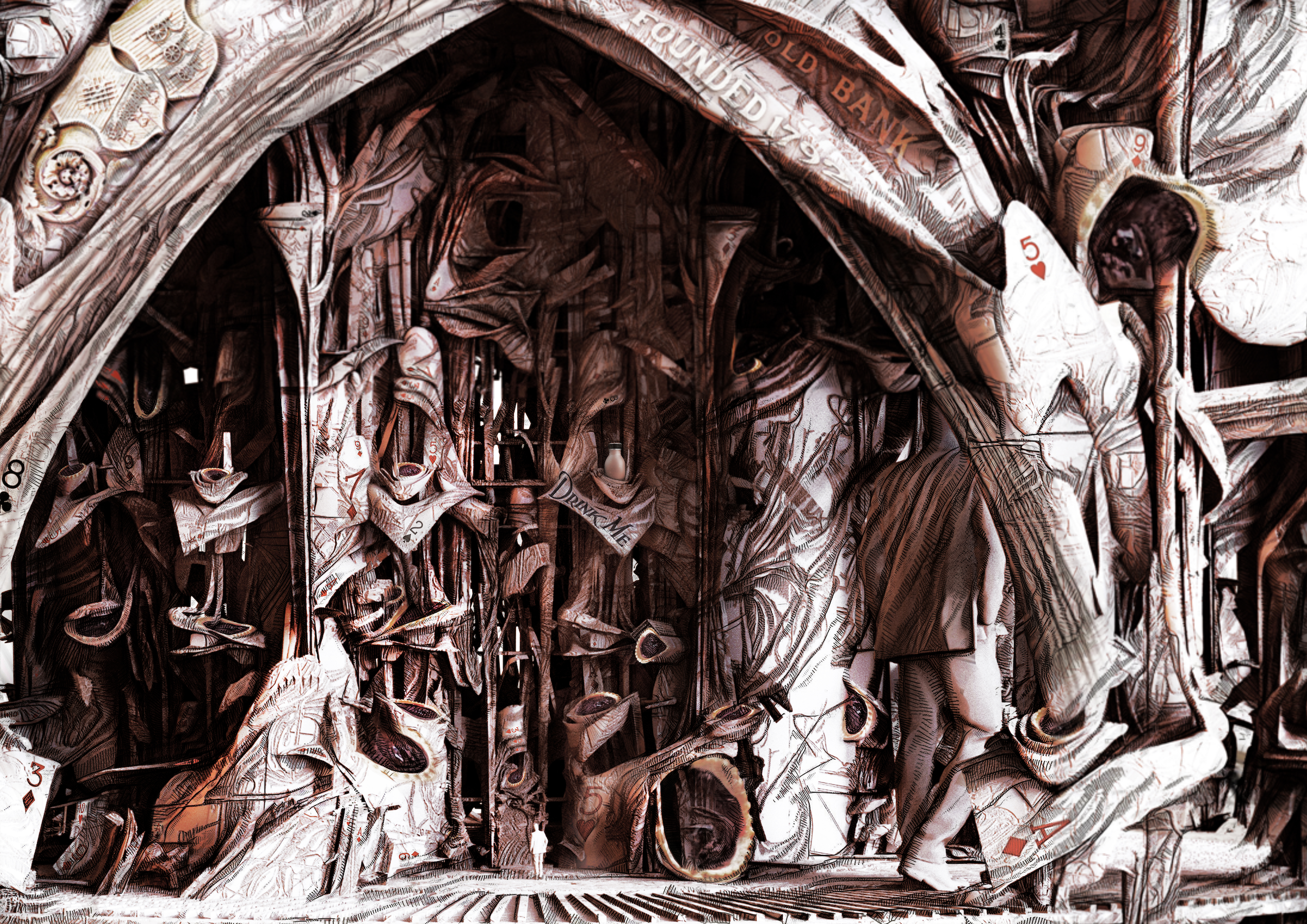 Morphing forms, dramatic shadows and complex folds make up this Alice in Wonderland-inspired image. The artist uses the fictional setup established by Lewis Carroll to explore the interaction between the physical and virtual worlds and discuss the interplay between humans and machines today. The drawing comments on how the dependence on 2D visuals on screens is disconnecting humanity from the physical experience of architecture.
Morphing forms, dramatic shadows and complex folds make up this Alice in Wonderland-inspired image. The artist uses the fictional setup established by Lewis Carroll to explore the interaction between the physical and virtual worlds and discuss the interplay between humans and machines today. The drawing comments on how the dependence on 2D visuals on screens is disconnecting humanity from the physical experience of architecture.
The image talks about how data centers are the archives of our online interactions and the servers where the data is stored can be a metaphor for how we occupy cities today. “The building is a privatized data bank, the data symbolically stored through VR in a virtual landscape known as www.onderland,” the artist explains.
Platform 9¾ Expansion
By Xiaohui Wen
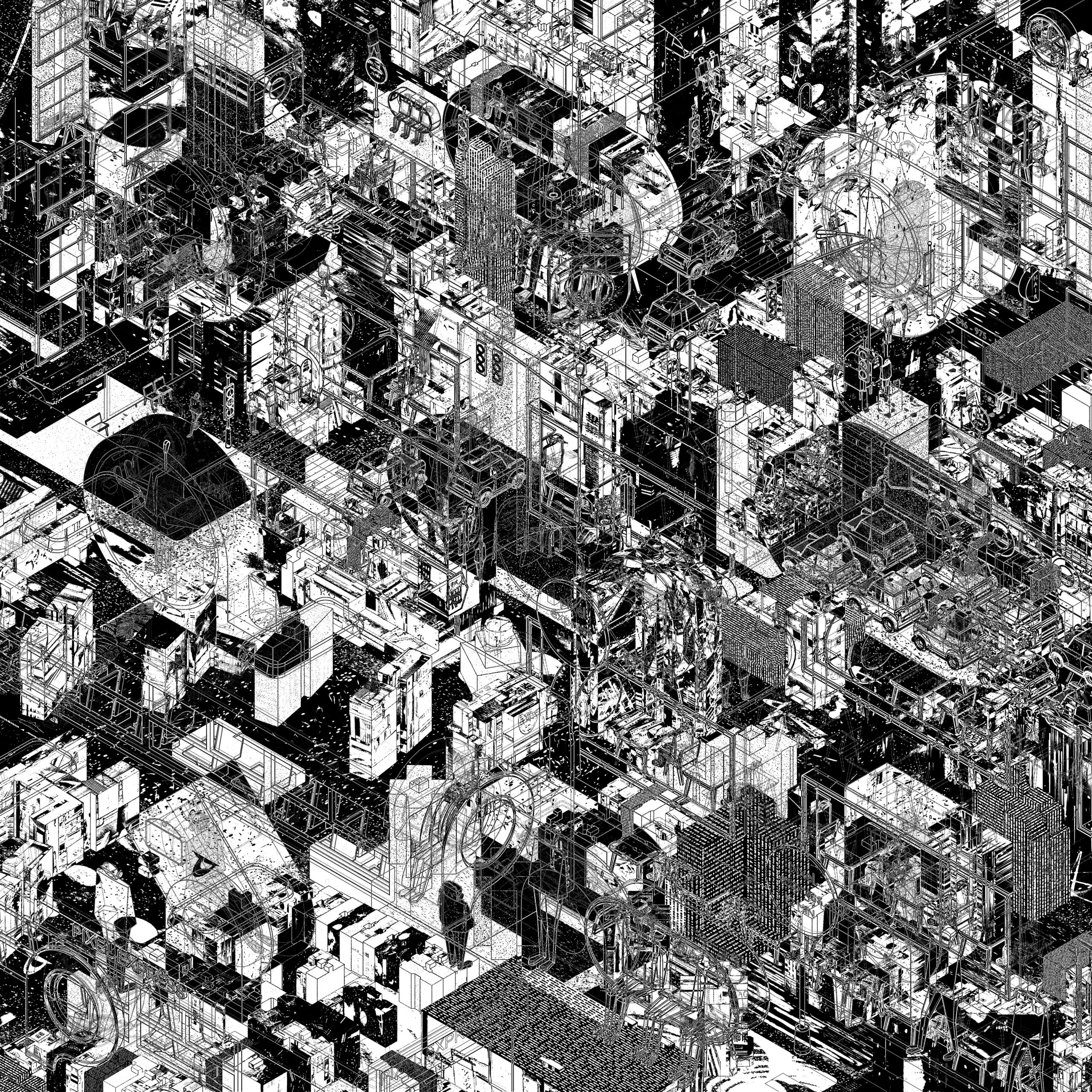 This artwork is another one that discusses the increasing popularity of screens and VR technology. These developments have allowed our reality to extend beyond the physical spaces to various cyber worlds available online. Here, the artist uses the example of Platform 9 ¾ on King’s Cross Station from the Harry Potter series by J.K. Rowling to show how an alternate fantasy world exists in the same plane as the ordinary world. The drawing explores how real and virtual architecture interact, negotiate and grow simultaneously, adding complexity to the urban fabric.
This artwork is another one that discusses the increasing popularity of screens and VR technology. These developments have allowed our reality to extend beyond the physical spaces to various cyber worlds available online. Here, the artist uses the example of Platform 9 ¾ on King’s Cross Station from the Harry Potter series by J.K. Rowling to show how an alternate fantasy world exists in the same plane as the ordinary world. The drawing explores how real and virtual architecture interact, negotiate and grow simultaneously, adding complexity to the urban fabric.
Fashionopolis
By Roxana Breceda
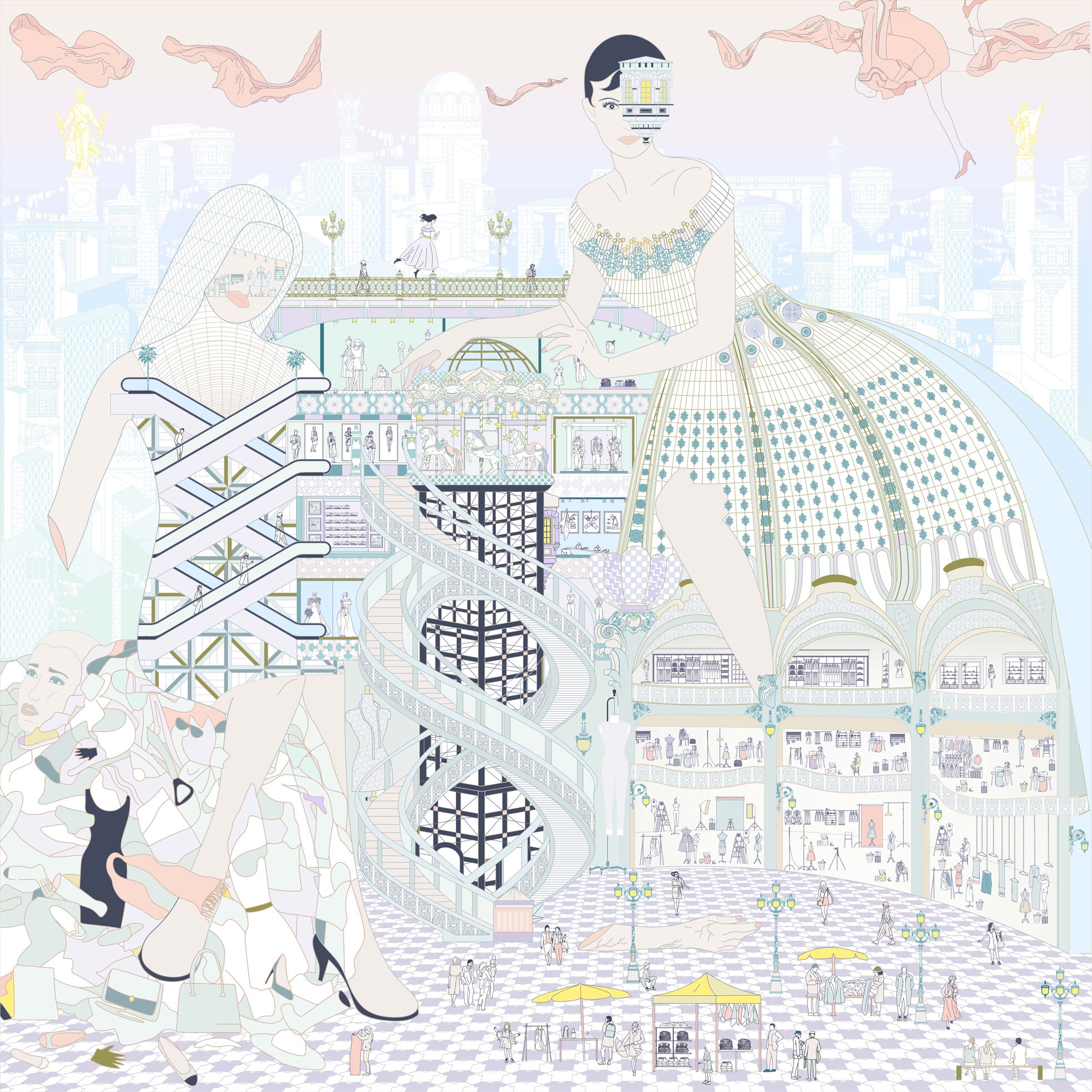 Dana Thomas’s book Fashionopolis is the inspiration behind this pastel-hued illustration. The art is making a statement about how fast fashion is detrimentally impacting the environment and labor laws. It talks about a city that is consumed by unwanted clothing and also sees the construction of fast architecture to support these ever-changing fashion trends. However, this capitalist growth has resulted in innovative ways of using the waste material and these new spaces. Unwanted clothing is repurposed as building materials, sewing has become a unisex skill and fashion is transforming into a collective process where people work and design together.
Dana Thomas’s book Fashionopolis is the inspiration behind this pastel-hued illustration. The art is making a statement about how fast fashion is detrimentally impacting the environment and labor laws. It talks about a city that is consumed by unwanted clothing and also sees the construction of fast architecture to support these ever-changing fashion trends. However, this capitalist growth has resulted in innovative ways of using the waste material and these new spaces. Unwanted clothing is repurposed as building materials, sewing has become a unisex skill and fashion is transforming into a collective process where people work and design together.
The Holy City of Detroit: The Last Supper
By Qaisy Jaslenda
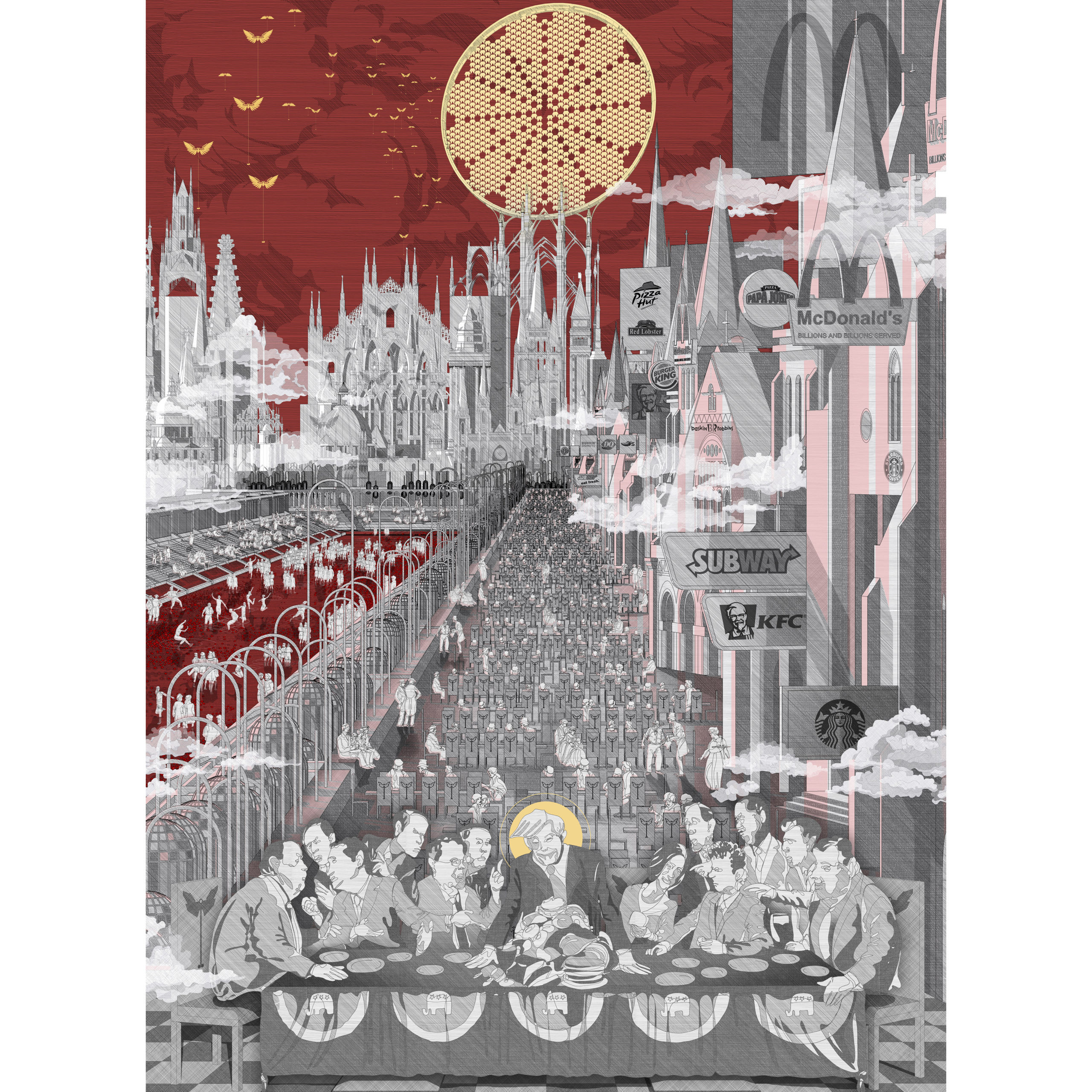 Illustrations have long been a tool for political commentary and this drawing takes it one step further by incorporating elements from renowned pieces such as A Tribute to Sir Christopher Wren by Charles Robert Cockerell and Leonardo da Vinci’s The Last Supper. It is also inspired by a cartoon published in MAD Magazine in 2016.
Illustrations have long been a tool for political commentary and this drawing takes it one step further by incorporating elements from renowned pieces such as A Tribute to Sir Christopher Wren by Charles Robert Cockerell and Leonardo da Vinci’s The Last Supper. It is also inspired by a cartoon published in MAD Magazine in 2016.
“Modeled within the premise of rebuilding Detroit as a holy site, the imaginary city serves as a pilgrimage destination for Christianity where Donald Trump is at the center of its belief,” shared the artist. “It is a political satire, but also suggests a near future possibility.” The critique of Trump’s policies is depicted through the portrayal of bloody skies, cathedrals and churches that are actually fast-food restaurants, and Republican candidates that stand in for disciples around a haloed Trump. Furthermore, a pile of food stands in front of him, with the excessive display perhaps acting as a metaphor for greed.
Losing Perspective
By Hanlie Booyens
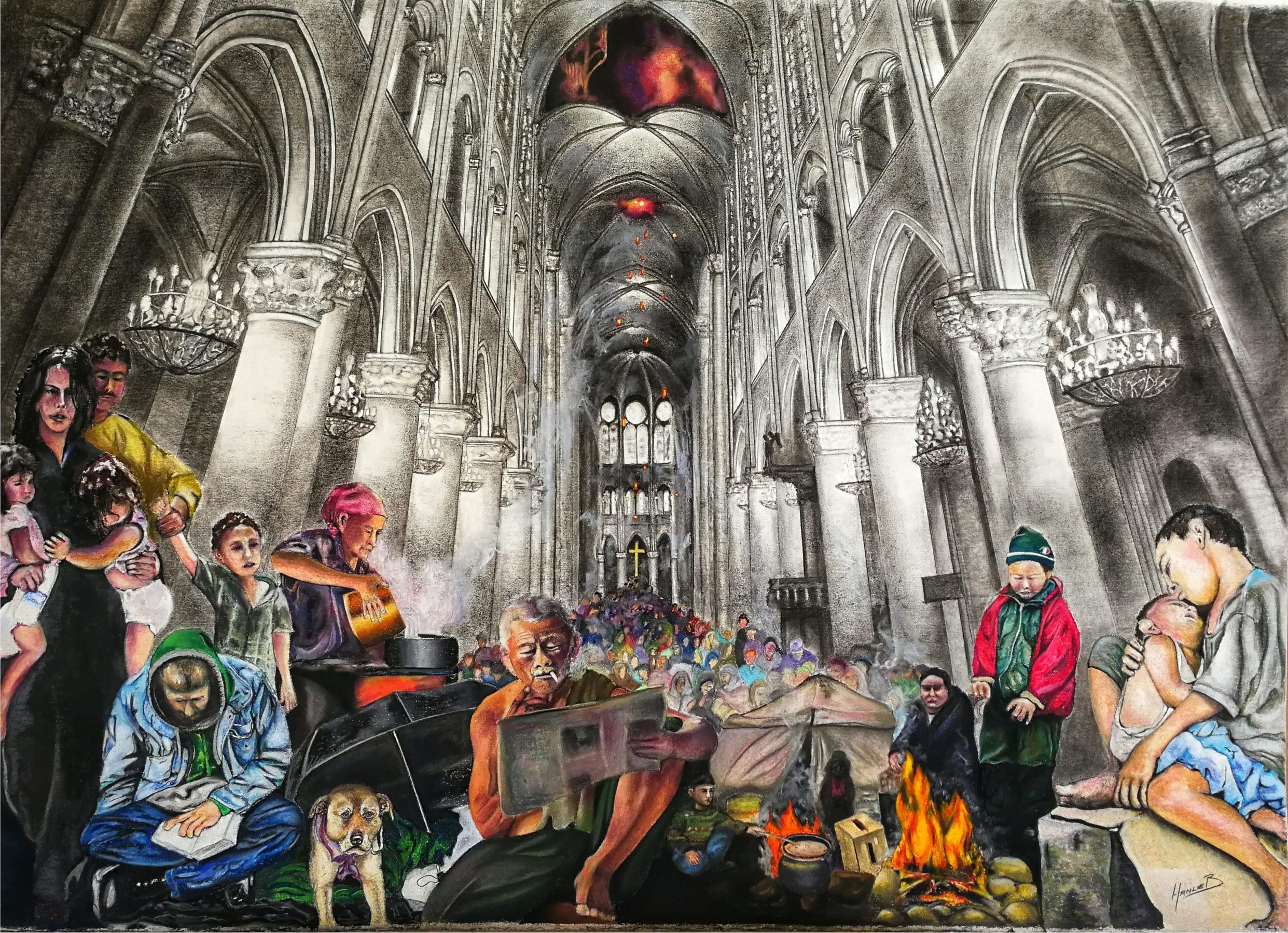 The School of Athens, a fresco by the Italian artist Raphael, depicts the culture and spirit of the Renaissance in all its glory. Using that as the foundation, the artist here talks about how the modern view of cathedrals is not one of hope but that of despair. Thousands are suffering because of reasons like overpopulation, poverty, homelessness, freezing weather, hunger and so on. They use this visual to show that we might just be heading towards an inevitable collapse.
The School of Athens, a fresco by the Italian artist Raphael, depicts the culture and spirit of the Renaissance in all its glory. Using that as the foundation, the artist here talks about how the modern view of cathedrals is not one of hope but that of despair. Thousands are suffering because of reasons like overpopulation, poverty, homelessness, freezing weather, hunger and so on. They use this visual to show that we might just be heading towards an inevitable collapse.
Respatializing the Bookspace of Fahrenheit 451 by Daniel Dickson
 Urging viewers to read Ray Bradbury’s Fahrenheit 451, the artist talks about how people have moved to video games, memes and zoom calls and are slowly distancing from “critical reservoirs of knowledge” like books. The visual depicts a perspective elevation of a structure that opens up much like a novel, where characters can wander through the different stacks created by temporal moments in books and collectively create new narratives. Dickson adds, “They examine tragedy — the pandemics, the burnings, the intolerances — and our capacity to learn through compromise, through empathy, through rebuilding. After all, the stories we write, read and tell are the legs for the stories we create.”
Urging viewers to read Ray Bradbury’s Fahrenheit 451, the artist talks about how people have moved to video games, memes and zoom calls and are slowly distancing from “critical reservoirs of knowledge” like books. The visual depicts a perspective elevation of a structure that opens up much like a novel, where characters can wander through the different stacks created by temporal moments in books and collectively create new narratives. Dickson adds, “They examine tragedy — the pandemics, the burnings, the intolerances — and our capacity to learn through compromise, through empathy, through rebuilding. After all, the stories we write, read and tell are the legs for the stories we create.”
Adenventure of the Fantastic Arcman: Piranesi
By Stefan Maier Bernadette Hofer
 Much like its source of inspiration, the monochromatic drawing uses the contrast of light and dark to create a character that becomes a representation of the city he inhabits. The artwork references Frank Miller’s comic series Dark Knight Returns to ask if identity is shaped by space or if it is the other way around. The artist establishes a circular connection between Batman and Gotham and shows how protagonists in comic books and their built environment respond to each other. “So, what defines the architecture of our comic heroes? Which role does it take? Superhero or supervillain?” they ask.
Much like its source of inspiration, the monochromatic drawing uses the contrast of light and dark to create a character that becomes a representation of the city he inhabits. The artwork references Frank Miller’s comic series Dark Knight Returns to ask if identity is shaped by space or if it is the other way around. The artist establishes a circular connection between Batman and Gotham and shows how protagonists in comic books and their built environment respond to each other. “So, what defines the architecture of our comic heroes? Which role does it take? Superhero or supervillain?” they ask.
Feast your eyes on the world's most outstanding architectural photographs, videos, visualizations, drawing and models: Introducing the winners of Architizer's inaugural Vision Awards. Sign up to receive future program updates >








